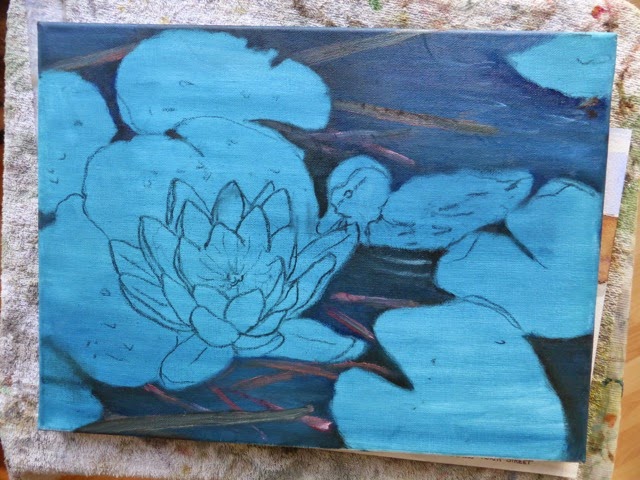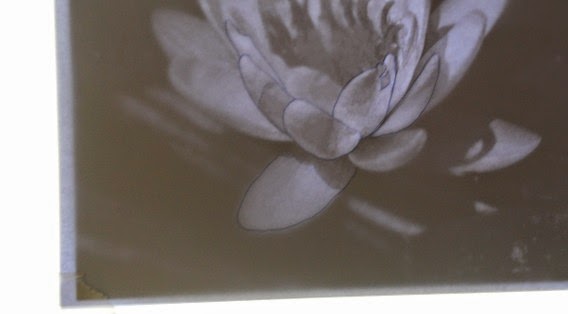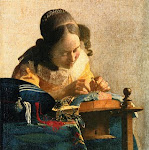1) My painting style is multi-layered build of one color layer at the top of another until desired color, intensity and overall appearance is accomplished. I start with very careful observation of the painting subject. Then I ask myself questions ... many of them. Once I am comfortable with what I plan to accomplish with a painting, what to include and what to exclude, I stretch watercolor paper and draw the composition. Only then painting with color begins.
I usually paint the main subject first, so that I can get a feeling how to handle background and the rest of the painting. Here I painted water lily by following the same painting process described in detail in my e-book "Painting Glorious Rose Flowers in Watercolor - in 7 Stages". In a nutshell, I paint first the value scale, then color of light and finally all shadow components. The gray dots are masking fluid, used to preserve white of the paper for later stages.
2) Initial color layer in shades of yellow, pink and blue.
3) Painted leaves. The adjustments will be completed in the final painting stage.
4) Painted first water layer.
5) Painted additional color layers on the grass and lily roots.
6) Removed masking fluid.
7) Painted all remaining elements, dew drops, ladybug and her reflection, except hart of the water lily. Many color layers were applied. In some areas more than 10 layers.
"Water Lily"
Lela Stankovic
8 X 6 inches
Watercolor on Arches 140 lb hot pressed paper
http://www.lelacreations.com
I usually paint the main subject first, so that I can get a feeling how to handle background and the rest of the painting. Here I painted water lily by following the same painting process described in detail in my e-book "Painting Glorious Rose Flowers in Watercolor - in 7 Stages". In a nutshell, I paint first the value scale, then color of light and finally all shadow components. The gray dots are masking fluid, used to preserve white of the paper for later stages.
2) Initial color layer in shades of yellow, pink and blue.
3) Painted leaves. The adjustments will be completed in the final painting stage.
4) Painted first water layer.
5) Painted additional color layers on the grass and lily roots.
6) Removed masking fluid.
7) Painted all remaining elements, dew drops, ladybug and her reflection, except hart of the water lily. Many color layers were applied. In some areas more than 10 layers.
8) The last 7-th stage - final adjustments of the whole painting, including painting all fine details. Here is the completed watercolor painting. In this stage I spend more time observing the painting then actually painting it. Every detail, edge, color, shadow is checked and corrected as needed.
"Water Lily"
Lela Stankovic
8 X 6 inches
Watercolor on Arches 140 lb hot pressed paper
http://www.lelacreations.com








































.jpg)
.jpg)
.jpg)
.jpg)











































































